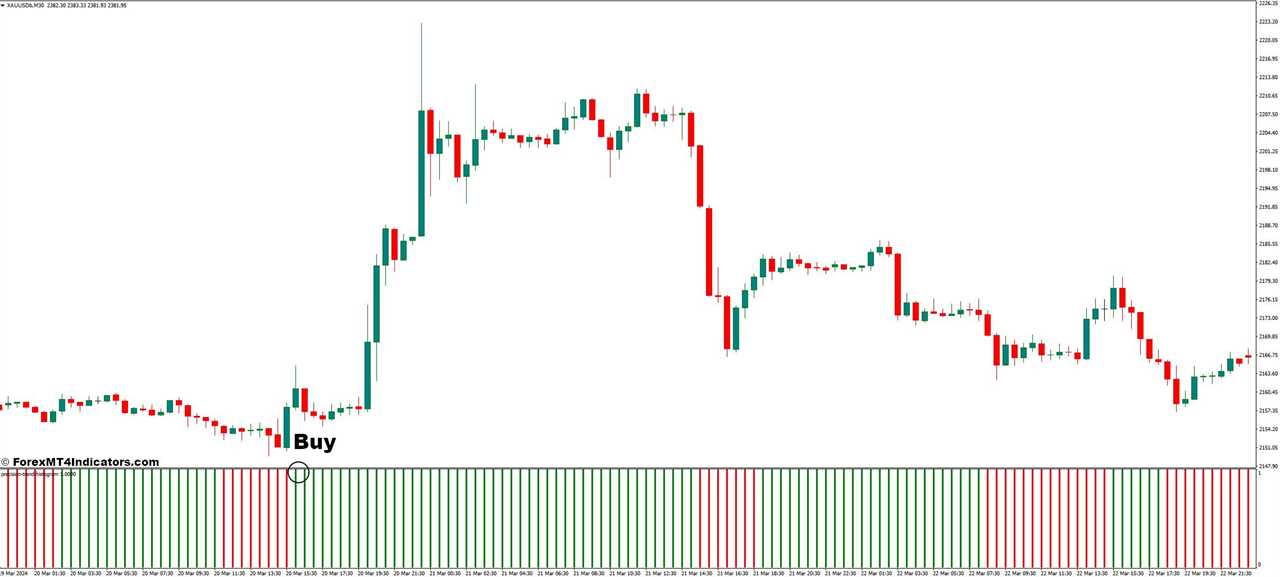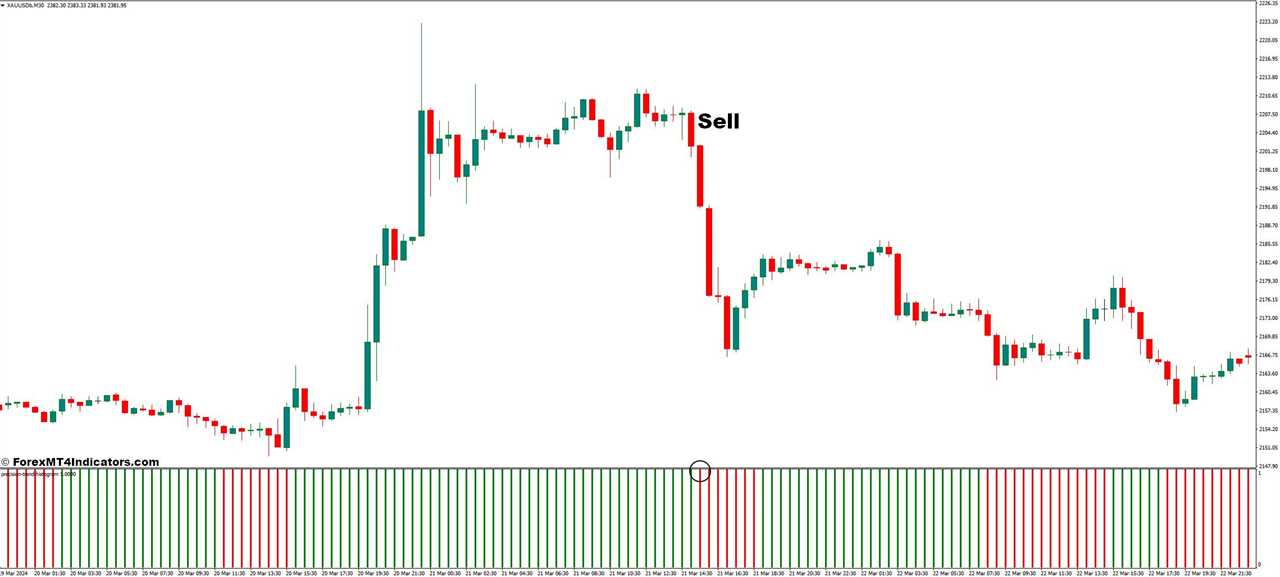||
Trend following capitalizes on the market’s inherent tendency to move in a particular direction for a sustained period. By identifying these trends, traders can position themselves to potentially profit from price movements. Enter the Precision Trend Histogram (PTH), a powerful tool designed specifically for the MT4 platform to simplify trend identification for you.
The PTH takes the guesswork out of deciphering price charts by translating complex calculations into an easy-to-understand histogram. This user-friendly interface makes it a valuable asset, especially for beginner and intermediate traders.
Understanding the Mechanics of the Precision Trend Histogram
So, how exactly does the PTH work its magic? Let’s peek under the hood. The indicator utilizes a proprietary algorithm to analyze price movements and identify the underlying trend. Don’t worry, you don’t need a Ph.D. in mathematics to use it! The PTH translates these calculations into a visual representation: a histogram with colored bars.
Here’s where things get exciting:
- Green bars: These signify an uptrend, music to the ears of long traders (those who buy expecting prices to rise).
- Red bars: Brace yourselves, bears (traders who profit from falling prices) – these signal a downtrend.
- Yellow bars: The market’s in a holding pattern – these yellow bars represent a range-bound market.
The beauty of the PTH lies in its simplicity. One glance at the histogram, and you have a clear understanding of the market’s current direction.
But wait, there’s more! The PTH allows for some customization. You can tweak a parameter called the “Action Level” to adjust the sensitivity of the indicator. This essentially fine-tunes how quickly the PTH reacts to changes in price direction. Remember, though, with great power comes great responsibility (or at least, the need for some practice!). Experimenting with the Action Level in a demo account is highly recommended before deploying it in live trading.
Implementing the Precision Trend Histogram on MT4
Adding the PTH to your chart is a breeze. Open your MT4 platform, navigate to the chart you want to analyze and right-click anywhere on the chart window. Select “Insert” from the pop-up menu, followed by “Indicators” and then “Custom.” Find the PTH indicator in the list and double-click it. Voila! The PTH will appear on your chart, ready to decipher trends for you.
Don’t forget about customization! Right-click on the PTH indicator on your chart and select “Properties.” Here, you can adjust the Action Level as discussed earlier and explore other settings to personalize your PTH experience.
Leveraging the Precision Trend Histogram for Trading Decisions
Now that the PTH is up and running, let’s explore how it can empower your trading decisions.
Identifying Trends
The core function of the PTH is to identify trends – uptrend, downtrend, or range-bound. This information is crucial for any trader, as it forms the foundation for your entry and exit strategies.
Entry and Exit Points
Here’s where the PTH truly shines. By interpreting the color-coded bars, you can make informed decisions about entering and exiting trades.
- Going Long: Spot a consistent sequence of green bars? This suggests a potential uptrend. Consider buying (going long) in anticipation of rising prices. However, don’t blindly chase every green bar. Look for additional confirmation, such as a price break above a resistance level, before entering a long trade.
- Going Short: Red bars dominating the histogram? This indicates a possible downtrend. You might consider selling (going short) to capitalize on falling prices. Remember, confirmation is key. Look for signs of weakness in the price action, such as a break below a support level, to strengthen your shorting conviction.
Combining PTH with Other Technical Indicators
While the PTH is a powerful tool, it’s not a magic bullet. For a more robust trading strategy, consider combining it with other technical indicators. Here are a few effective pairings:
- Moving Average Convergence Divergence (MACD): The MACD helps identify potential trend reversals. When used together, the PTH can confirm the direction of the trend, and the MACD can signal when that trend might be losing momentum.
- Relative Strength Index (RSI): The RSI measures price momentum and can indicate overbought or oversold conditions. The PTH can pinpoint the overall trend, while the RSI can help you identify potential entry and exit points within that trend by highlighting areas where the market might be due for a correction.
Remember, these are just a few examples. Experiment and find a combination of indicators that suits your trading style and risk tolerance.
Strengths and Limitations of the Precision Trend Histogram
Like any tool, the PTH has its strengths and limitations. Let’s delve into both sides of the coin.
Strengths
- Simplicity: The PTH’s user-friendly interface makes it an excellent tool for beginners and intermediate traders. The color-coded bars offer a clear visual representation of the trend, eliminating the need for complex technical analysis.
- Trend Clarity: The PTH excels at identifying trends, particularly strong trends. The consistent display of green or red bars provides a clear picture of the market’s direction.
- Customization: The PTH allows for some customization through the Action Level setting. This empowers traders to adjust the indicator’s sensitivity to suit their trading style and preferred level of responsiveness to price movements.
Limitations
- Potential for Lag: The PTH, like many trend-following indicators, can suffer from lag. This means it might react slightly behind actual price movements. This can be mitigated by combining the PTH with indicators that help identify potential trend reversals earlier.
- Repainting Issues: Some PTH variations might repaint past data when new price information becomes available. This can be misleading and make backtesting strategies less reliable. Choose a reputable PTH indicator from a trusted source to minimize this issue.
- False Signals: No indicator is perfect, and the PTH is no exception. It can generate false signals, especially in choppy or volatile markets. Always practice sound risk management techniques and combine the PTH with other trading tools for confirmation before entering a trade.
Mitigating Limitations
- Backtesting: Backtesting your trading strategy using historical data can help you identify potential limitations of the PTH, such as lag or false signals. By understanding these limitations, you can develop strategies to work around them.
- Risk Management: Solid risk management is paramount in any trading strategy. Employ techniques like stop-loss orders to limit potential losses, even if the PTH generates a false signal.
Advanced Applications of the Precision Trend Histogram
The PTH’s usefulness extends beyond basic trend identification. Here are some advanced applications to explore:
- Utilizing PTH for Multiple Timeframes: The PTH can be applied to different chart timeframes, providing insights into both short-term and long-term trends. For instance, analyzing a higher timeframe chart with the PTH can help identify the overall market direction, while using it on a lower timeframe chart can help pinpoint potential entry and exit points within that trend.
- Combining PTH with Price Action Strategies: Price action analysis focuses on studying price movements themselves to identify trading opportunities. The PTH can complement price action strategies by confirming the underlying trend. For example, a bullish price pattern (like a breakout) combined with a sequence of green bars on the PTH strengthens the
How to Trade With The Precision Trend Histogram Indicator
Buy Entry

- Entry: Look for a consistent sequence of green bars on the PTH, indicating a potential uptrend.
- Confirmation: Ideally, see a price breakout above a resistance level or a bullish price action pattern like a hammer candlestick.
- Stop-Loss: Place your stop-loss order below the recent swing low before the uptrend.
- Take-Profit: Consider taking profits at key resistance levels or by using a trailing stop-loss that adjusts upwards as the price rises.
Sell Entry

- Entry: Look for a consistent sequence of red bars on the PTH, indicating a potential downtrend.
- Confirmation: Ideally, see a price breakdown below a support level or a bearish price action pattern like a hanging man candlestick.
- Stop-Loss: Place your stop-loss order above the recent swing high before the downtrend.
- Take-Profit: Consider taking profits at key support levels or by using a trailing stop-loss that adjusts downwards as the price falls.
Precision Trend Histogram Indicator Settings

Conclusion
The Precision Trend Histogram emerges as a valuable tool for traders, particularly beginners and those seeking a clear visual representation of trends. While it boasts strengths like user-friendliness and trend clarity, understanding its limitations like potential lag and false signals is crucial.
Recommended MT4/MT5 Broker
XM Broker
- Free $50 To Start Trading Instantly! (Withdraw-able Profit)
- Deposit Bonus up to $5,000
- Unlimited Loyalty Program
- Award Winning Forex Broker
- Additional Exclusive Bonuses Throughout The Year
- Exclusive 50% Cash Rebates for all Trades!

>> Sign Up for XM Broker Account here with Exclusive 50% Cash Rebates For All Future Trades [Use This Special Invitation Link] <<
Already an XM client but missing out on cashback? Open New Real Account and Enter this Partner Code: 𝟕𝐖𝟑𝐉𝐐
(Free MT4 Indicators Download)

Precision Trend Histogram MT4 Indicator
||
-----------------------------------------------------
By: Tim Morris
Title: Precision Trend Histogram MT4 Indicator
Sourced From: forexmt4indicators.com/precision-trend-histogram-mt4-indicator/?utm_source=rss&utm_medium=rss&utm_campaign=precision-trend-histogram-mt4-indicator
Published Date: Mon, 02 Sep 2024 01:00:26 +0000
Read More
.png) InvestingStocksToolsClubsVideosPrivacy PolicyTerms And Conditions
InvestingStocksToolsClubsVideosPrivacy PolicyTerms And Conditions
